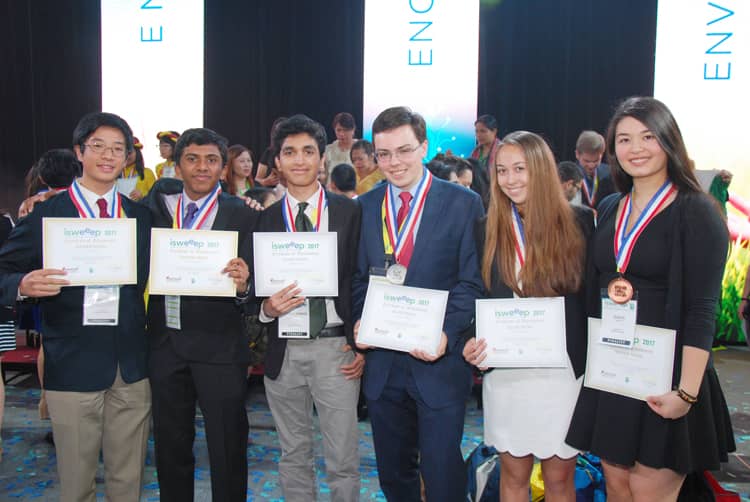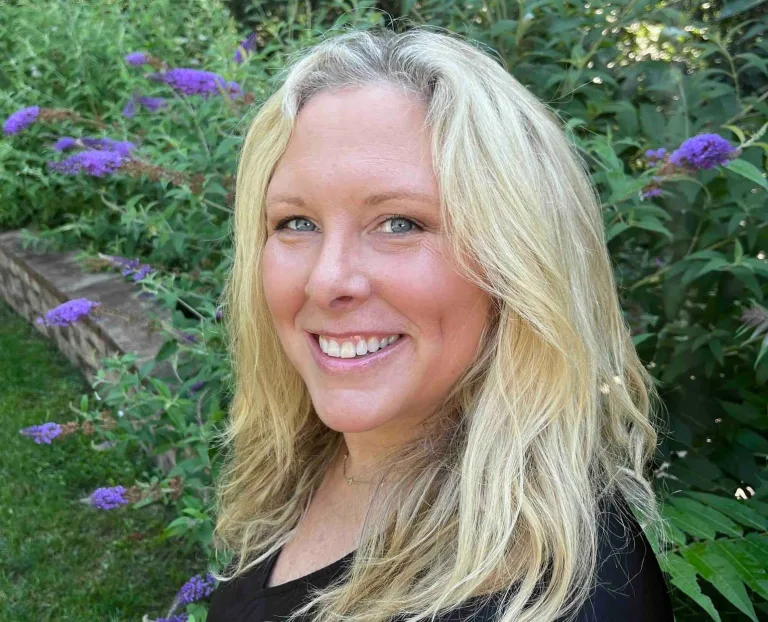

Each of the six – a school record – Greenwich High School students that were awarded the opportunity to participate in the 2017 International Sustainable World (Energy, Engineering, and the Environment) Project Olympiad (ISWEEEP) took home top prizes. The 2017 ISWEEEP was held in Houston, Texas, May 4-7.
The following GHS students collectively received two gold medals, three silver medals, and one bronze medal in their respective categories, described below along with a narrative on their award-winning science research projects conducted at Greenwich High School:
Rahul Subramaniam: Gold Medal in Health and Medicine for “Rapid Colorimetric Field Monitoring System for Zika Virus in Mosquito Populations via DNAzyme-Functionalized Gold Nanoparticles.” Rahul created an inexpensive and consumer-friendly mosquito trap with a food-source that would change color (in ~30min) if any of the (feeding) mosquitos were infected with Zika. Rahul is the first researcher in literature to detect mosquito saliva in a live trap; this enabled him to detect Zika virus in that saliva in a field trap, which can be used as the initial basis for area quarantine.
William Yin: Gold Medal in Health and Medicine for “Cost-Effective, Portable Paper-Based Diagnosis of Alzheimer’s Disease: Targeting Aβ Oligomers Using Curcumin-PLGA-Ceria Nanoconjugates as Artificial Biomarkers.” Alzheimer’s disease is a neurodegenerative disorder characterized by loss of reasoning and memory. As the most common neurodegenerative disorder, Alzheimer’s affects over 35 million people around the world. Unfortunately, research into the root cause of the disease is very limited, as those with Alzheimer’s are identified and medically followed only after symptoms are evident, and the disease is well under way. Early detection of Alzheimer’s would propel research towards a cure, as the initial, causative cascade of changes to the brain could be identified. In response to this need, William devised a low-cost, paper-based urine test for early detection of Alzheimer’s. In his proposed test, biomarkers are injected into the patient, and then interact with oligomers that are present for those afflicted with disease, up to two years prior to the onset of symptoms. These biomarkers are eventually released in the urine, where they can be quantified in a simple color test.
Sophia Chow: Silver Medal in Health and Medicine for “PDE-4 Inhibitor-Assisted Antibiotic Suppression of Borrelia Biofilm Growth for Treatment of Chronic Lyme.” In her research, Sophia discovered that PDE-4 inhibitors, which are drugs that are commonly used to treat asthma, chronic obstructive pulmonary disease (COPD), and inflammatory conditions, are effective when combined with antibiotics, to effectively treat Chronic Lyme disease. Chronic Lyme is otherwise difficult to treat, since the responsible organism, Borrelia, forms a biofilm, or what is analogous to a protective turtle shell, around those parts of the organism that can be treated with antibiotics. Sophia found that PDE-4 inhibitors, in combination with common antibiotics, can potentially reduce Borrelia biofilm growth by 96%, thus eradicating the bacteria that causes Lyme in someone with the chronic condition.
Bennett Hawley: Silver Medal in Energy for “Renewable Energy Generation of a Hybridized Saltwater Electrochemical and Hydrokinetic Energy System.” As the need for renewable energies and our demand for resources grow, researchers question which is the most efficient and plentiful renewable energy resource? As solar, wind, and biofuel technologies grow, many have overlooked our oceans as a resource for power generation, both from its constant wave motion, and the energy that is available through the breakdown of its salt content. Bennett designed a hybrid electrochemical and rotational water turbine energy generation system that would reside underneath pre-existing buoys, so that measurable power can be generated, off shore, without the typical environmental and aesthetic concerns of current wave generators and wave turbines.
Sanju Sathish: Silver Medal in Health and Medicine for “The Optimization of Nanoparticle-based Drug Delivery of Melittin in a Colloidal Suspension as A Selective Method to Target HIV Structural Antigen p24.” In short, Sanju discovered that melittin (a peptide found in the common honey bee venom), when administered to model-HIV cells (via his innovative magnetic nanoparticle delivery system), can inhibit the replication (or growth) of the human immunodeficiency virus. His discovery may lead to an innovative treatment to slow and eradicate HIV in patients, once infected.
Dante Grace Minichetti: Bronze Medal in Health and Medicine for “Targeted Anticancer Properties of Honey Bee Melittin via Cell Surface Lipid Disruption.” Current cancer treatments are limited in their success, due to their inability to selectively destroy cancer cells, while leaving normal, neighboring, healthy cells intact. In her research, Dante Grace discovered that mellitin (the same honey bee venom mentioned earlier) can selectively target cancer cells, and cause them to rupture, by targeting the lipid content of a cancer cell’s membrane, which is unlike that of normal cells. Unlike current chemotherapies, Dante Grace’s promising new mellitin treatment could be administered locally, to target only the cells of a malignancy, while leaving neighboring, healthy cells unharmed.





